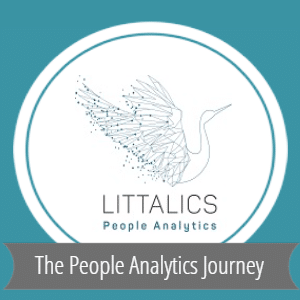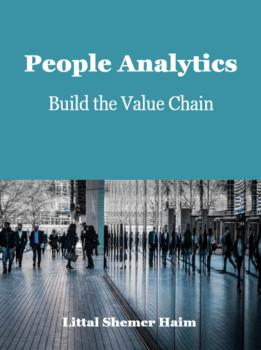(Updated: March 11th 2024) I’m not a time traveler, alas. However, the recent advancement in LLMs (Large Language Models), the constant exploration of how AI apps fit my workflows, and the ubiquitous conversations about the future of work make me feel that I have a decent supplement. So, in this article, I share some personal experiences, contemplations, and resources to crack some of the mysteries about LLMs, AI-Copilot, skills, and their impact on future roles.
Hopefully, my insights into how AI reshapes my current work will encourage you to adapt. Whether you are a leader in an organization or an individual player in the industry, this article emphasizes the need to develop new skills and behaviors for effective collaboration with AI. However, I skipped the technical details and shared my journey with a smile.
Current job titles say (almost) nothing about the future roles
I hate to use a cliche, but AI transforms our work. As such, job titles that once implied a specific set of responsibilities may no longer hold as AI takes over certain aspects of that role or introduces new tasks that were not previously part of the job.
For instance, take my domain of expertise. A Workforce Analytics title no longer fits because work is not limited to employees (there are outsourced roles and freelancers, too). The title People Analytics is not a good fit either because work is not limited to people (there are robots and algorithms, too). So, what would be an excellent title to redefine a job that analyzes the association between work processes and business results?
In a recent interview, business psychologist Max Blumberg discussed a transformation of HR Management into Resource Management and emphasized the need to shift from focusing on people, processes, and policies to a more business-driven approach. Following the notion of such transformation, I asked one of the AI tools I currently use in my workflow (Perplexity.ai if you persist on knowing), “What is the definition of work in the context of business strategy?” Interestingly, the answer I got did NOT include any of the words people, employees, or any of the derivative HR titles. Here’s the informed answer I received:
“…work refers to the coordinated efforts and actions of different departments within a business to achieve the strategic goals and objectives of the organization. It involves aligning decision-making, resource allocation, and implementation to support the overall direction of the company. This collaborative effort is essential for the successful execution of the business strategy and the realization of the company’s long-term vision and objectives.”
So, beyond showing off my AI literacy here, i.e., my ability to interact effectively with AI to solve this puzzlement, it seems that in the era of AI, at least based on an answer of AI, work is not necessarily related to skills, abilities, and aptitudes that a specific individual in a particular role possesses.
Current collaboration with AI (sometimes) leads to infinite loops
Eventually, LLMs will impact many roles; I believe mine is no exception. But how? Encouraged by previous AI outputs, I asked Gemini, an AI tool developed by Google, about LLMs and people analytics. Specifically, I asked, “I’m an expert in people analytics, and I explore how the future of this domain is shaped by LLMs. What do you think I should read today to keep up with the advancement in the field?”
Bard generously offered a long list of resources, including some articles, research papers, podcasts, and events. However, my professional universe was almost collapsing in on itself when I discovered an article by Littalics (That’s me!) in the fifth resource, alongside publications by Visier, LinkedIn, and other leading resources. Was that a joking flattery, or does this app have a severe blind spot?
Fortunately, I came to my senses quickly and continued asking my artificial interlocutor: “There are many resources to this topic. Can you tell me why you picked the above to your list?” Its immediate answer listed several criteria: Relevance, Credibility, Variety, Timeliness, Depth, and Accessibility. Impressive!
However, as the conversation with Bard continued, a deeper examination of its answers provoked questions about meeting these criteria and this artificial collaboration in general. Will LLMs change how I curate knowledge, offer advice, and educate professionals in the field? Which of my tasks will be augmented by AI? To figure out, I did not settle with AI this time but turned to methodological research done by humans (with just a little help from AI).
Potential for automation and augmentation by language dominance
A white paper published by the World Economic Forum discusses the potential direct, near-term impacts of LLMs on jobs. It analyzes individual tasks across occupations, assessing the potential exposure of each task to LLM adoption, classifying them as tasks with a high potential for automation, high potential for augmentation, low potential for either automation or augmentation and unaffected (non-language tasks). It also provides an overview of new roles emerging due to adopting LLMs.
To assess the impact of LLMs on jobs, researchers analyzed over 19,000 individual tasks across 867 occupations. The analysis reveals that tasks with the highest potential for automation by LLMs tend to be routine and repetitive. In contrast, those with the highest potential for augmentation require abstract reasoning and problem-solving skills. Tasks with lower potential for exposure require a high degree of personal interaction and collaboration.
Whatever your role or industry, you can find clues for future work in this research. I explore the results from my angle as an expert in People Analytics. I specifically looked for jobs that are similar task-wise to mine. I found that the jobs ranking highest for potential automation are analysts and statistical assistants. Jobs with the highest potential for task augmentation are statisticians and editors. Jobs with lower potential for automation or augmentation are educational, guidance, and advisers. Lastly, new roles reported are AI ethics and governance specialists.
Implications for organizations: Leverage management skills
My chats with AI might be artificial, but my career questions are sincere. My future work will require collaborating with AI, enhancing productivity and efficiency across various tasks. According to business innovation expert Tom Davenport, those who refuse to adapt will find themselves at a disadvantage. Introducing new skills and behaviors is necessary to enter this copiloting era. But there is no single blueprint to change the mixture of skills.
Therefore, organizations should encourage employees to try and utilize AI systems to boost their productivity while formulating policies and guidelines for safe and ethical use. As AI substantially alters a job, the organization should consider redesigning its tasks to maintain and avoid impacting the workforce.
To facilitate this transition, departments that deliver strategic advancement and innovation must reimagine work processes and invest in developing skills that enable AI to become more integrated into the workplace. As part of this evolution, strategic planners must understand the difference between human skills that AI will replace and those it will augment. Some skills, however, will not be impacted.
When the copilot is in every employee’s pocket, says Kathleen Hogan, Chief People Officer at Microsoft, both human and technical skills will be utilized. Many human capabilities are essential to the collaboration between human workers and AI, such as analytical thinking, creative problem-solving, and the ability to detect bias. However, the most prominent factors for non-managerial employees to be effective copilots with AI are management skills, such as task delegation, clear communication, setting expectations, analyzing outcomes, and providing feedback.
Managerial skills will also enable us to fundamentally rethink how we value and utilize human skills in collaboration with AI. A fundamental approach in this process is “Design for Dialogue.” This concept emphasizes viewing AI as an assistive agent that enhances human capabilities over time rather than just an automation tool. By Incorporating its elements – task analysis, interaction protocols, and feedback loops – we can create a compelling and adaptable workflow that leverages the strengths of both humans and AI. (This paragraph is the outcome of my “interaction protocol” with my “second brain,” which I created using Mem.ai to redesign my learning and content creation workflows)
Implications for anyone: Explore AI to do more and differently
Managerial skills will be necessary beyond effective collaboration between AI and us humans. These skills will be the bridge that connects our past, present, and future of work, allowing us to harness AI and reshape our digital environment, just like how the internet revolutionized business operations in the 90s. Therefore, they are crucial for everyone.
I was fortunate to start my career in the ’90s when the internet was introduced to the business environment. As Ryan Roslansky, CEO of LinkedIn, nicely describes in his article, Talent Management in the Age of AI, three decades after it was first introduced, no one talks about the internet. But we all talk about what we do with the internet, such as e-commerce, content creation, remote work, and more.
Eventually, we won’t talk about AI either. But we will discuss how AI is changing work and life. As a multidisciplinary professional, I don’t intend to wait another three decades. I’m already exploring how AI enables me to do more and differently in every task. I explore various AI apps in my workflows, and as an orchestra conductor, I make sure they all play nicely together. Such exploration is essential to business leaders, organizational development experts, and any player in any industry, whether employee, contingent worker, or solopreneur.







